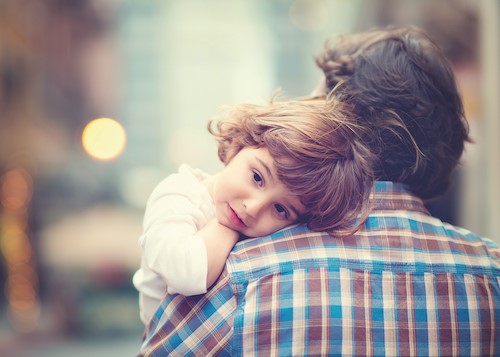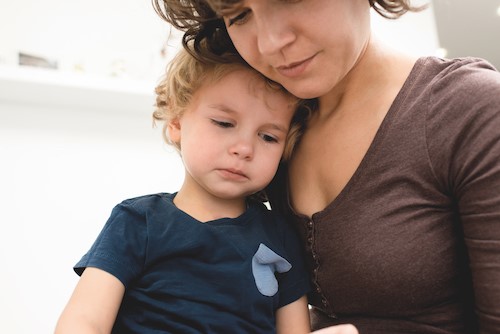Helping Your Child with their Big Emotions
Written by Dr Anne Lane, a Clinical Psychologist and author.
I remember my son, aged three. It was 4am and he was in the bathroom wailing. ‘The toothpaste looks funny!’ he sobbed as I stumbled out of bed to see what the problem was.
‘The toothpaste’s fine.’ I sighed as I picked him up to take him back to bed.
‘It’s not. I don’t like it!’ He began to yell hysterically.
Young children’s emotions can be big, confusing and, frankly, overwhelming. It might be that they have a particular idea about something or they’ve become hooked into a problem. Rather than face a full meltdown you try to find a fix. You replace one perfectly fine banana with another, you clean an invisible mark from a jumper or scramble around for a different colour lolly. But the emotion simply seems to escalate. The replacement isn’t ‘right’. The colour is still ‘wrong’. The smell is ‘funny’ and ‘not good’.
So how do we help our child through these tricky emotional states? What’s the best way for a parent to respond to the many challenging behaviours that can come alongside them?
As I think back to that 4am toothpaste incident, the thing that helped (once I had tried the ‘there’s nothing wrong’ line), was getting down to his level and simply saying, ‘You feel really upset because the toothpaste looks funny’.
Let me explain why such basic steps create a foundation for trust and ease around a young child’s emotions and how to move through these big emotions with your own child.
The most important thing to know is that young children rely on you to work out their emotions. Although they often become fixated on a problem or a particular solution, really they are looking to make sense of their emotions through you. You’re the person they trust to learn what’s safe and what isn’t and how they should respond. They need to know that you can bear their emotions, understand what’s going on and guide them through.
Here are five steps to help you when those big, overwhelming emotions arrive:
- Model sturdiness and security: Your child’s emotions can feel scary. They can be big and disorientating. They are frantically either trying to take control or becoming overwhelmed and scared. It’s therefore important that you model sturdiness and security and prioritise keeping your child safe.
You might say: ‘I can see you’re feeling a lot of big feelings. I won’t let you hurt me or damage your toys. You’re safe here with me.’
- Connect with the feelings: When you connect to your child’s feelings, you watch and listen and summarise in very simple terms. Sometimes your child’s upset is understandable, at other times it can be baffling. Either way, by acknowledging their experiences, they trust that you are paying attention. You might say ‘You didn’t want the banana cut,’ or ‘You want me to know that these trousers are the wrong colour’.
- Help them process the emotion: You want your child to start to recognise and observe their own feelings, rather than just reacting. To do this, describe an emotion with the word ‘feel’ in front: ‘You feel cross’, or ‘You feel sad and worried’. When you add an emotion word such as cross or sad or worried, your child is more able to observe their own experience. Rather than just reacting, they slowly begin thinking and reflecting.
- Guiding your child through: One of the most confusing aspects of parenting a toddler is that they often don’t seem to know what they really want. They want the banana sliced and then they hate it that you’ve sliced it. They wish they could have another ice lolly but then cry when you manage to find one. Trying to fix the problem or offer choices simply leaves them feeling more confused and overwhelmed. When emotions are frantic and confusing, your job is to slow things down and acknowledge and soothe. Although the emotions can be intense, the more sturdy and aware you are, the more effectively they settle.
- Reflecting later: If your child’s emotions have been large and distressed, it’s helpful to return later, once things have settled, to what happened. This works best when your child is well rested and fed and everything is settled. The secret here is to give a simple description of what happened. You could say: ‘Mummy loves you and you felt some really big emotions when we went to playgroup. You felt really cryey and Jessie had to cuddle you and help you say goodbye’. When you talk about things afterwards without tension or judgement, you give your child an extra sense of security. These emotions were tricky but they were okay. Mummy and I can cope. We're safe.
My final piece of advice is to be kind to yourself. Helping your child through all of these big emotions can be a bumpy ride. There will be days when it feels easier and days when your energy and focus are being pulled in all directions. Take heart. Your child doesn’t need perfect parenting, she needs good enough and that will mean plenty of mistakes and repairs and do overs, with lots of reflecting and talking. Nothing is more helpful and supportive than this.
When your child struggles with fearful, anxious emotions:
Although anxiety feels frightening, it's important to think of it as a normal human emotion. Your job is to help your child learn how to manage it by creating a sense of safety and security whilst helping them work through the feeling.
Here are some ways in which you can support your child:
- Slow things down and talk about the feelings/needs that come up for your child: 'You feel a bit wobbly', 'You want mummy to be near'.
- Make sure your movements are gentle and steady and comfortable: Your child picks up on your body language more than your words. Slower, sturdy movements and simple phrases signal safety.
- Find a sweet spot in between trying to push your child to overcome a fear and simply pulling away: This might be helping your child join in with a small action. For example, you could say, 'You're really not sure about dogs, let's do a tiny little wave just so we can find a brave feeling to help you'.
- Later, tell the story of the feeling. Balance describing the worried feeling with the small brave feeling. 'We saw a dog and you felt wobbly. So mummy stayed with you and we did a little brave wave to the dog to make us feel a bit better'.
Dr Anne Lane is a Clinical Psychologist and author. Her new book ‘Nurture Your Child’s Emotional Intelligence: 5 Steps to Help Your Child Cope with Big Emotional and Build Resilience’ is available through all major book sellers. Follow her on Instagram @dr.annelane


